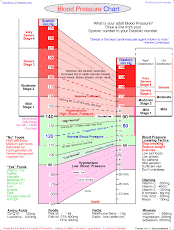Thursday, March 26, 2009
Monitoring Heart Recovery Rates
A good method of gauging exercise intensity and recovery times is by taking the pulse. There are several important numbers. The resting heart rate which can be established by taking the pulse first thing in the morning for three consecutive days. The average will determine the resting pulse. The maximum heart rate and the recommended training rates are important to know. Those numbers can be determined by taking the number 220 subtracting age; then multiply 55% for the lower number and 85% for the upper number. In my case a good training zone is a pulse rate of between 90 and 134. My pulse seems to be between 120 and 126 after a hard run. Besides good training pulse rate ranges we can also determine the heart recovery rate. Take your pulse immediately after you have cooled down for 5 minutes. It should only take 5 minutes for a runners pulse to return to 60% of the maximum heart rate. In my case a recovery pulse rate five minutes after I've stopped running should be 94.8. If my pulse has not come down to 94 then I haven't spent enough time cooling down. In the Fitness: Theory and Practice book I learned that "A recovery heart rate can indicate an individuals fitness level by the speed at which heart rate returns to a pre-exercise level. It is also an indicator of whether the cool down period was sufficient, and if exercise intensity was appropriate. After five minutes, the heart rate should by 60% or less of the estimated maximum HR(220-age, multiplied by .6)."Warning Signs 1. Check to see if your pulse rate returns to normal within 5 minutes of finishing your activity.2. Be careful of overheating or dehydrating during exercise.3. Proper rest is essential.4. Do not overdo it - watch for recurring or persisting pain.What Is Recovery Heart Rate? --by eHow.com
Subscribe to:
Post Comments (Atom)


No comments:
Post a Comment